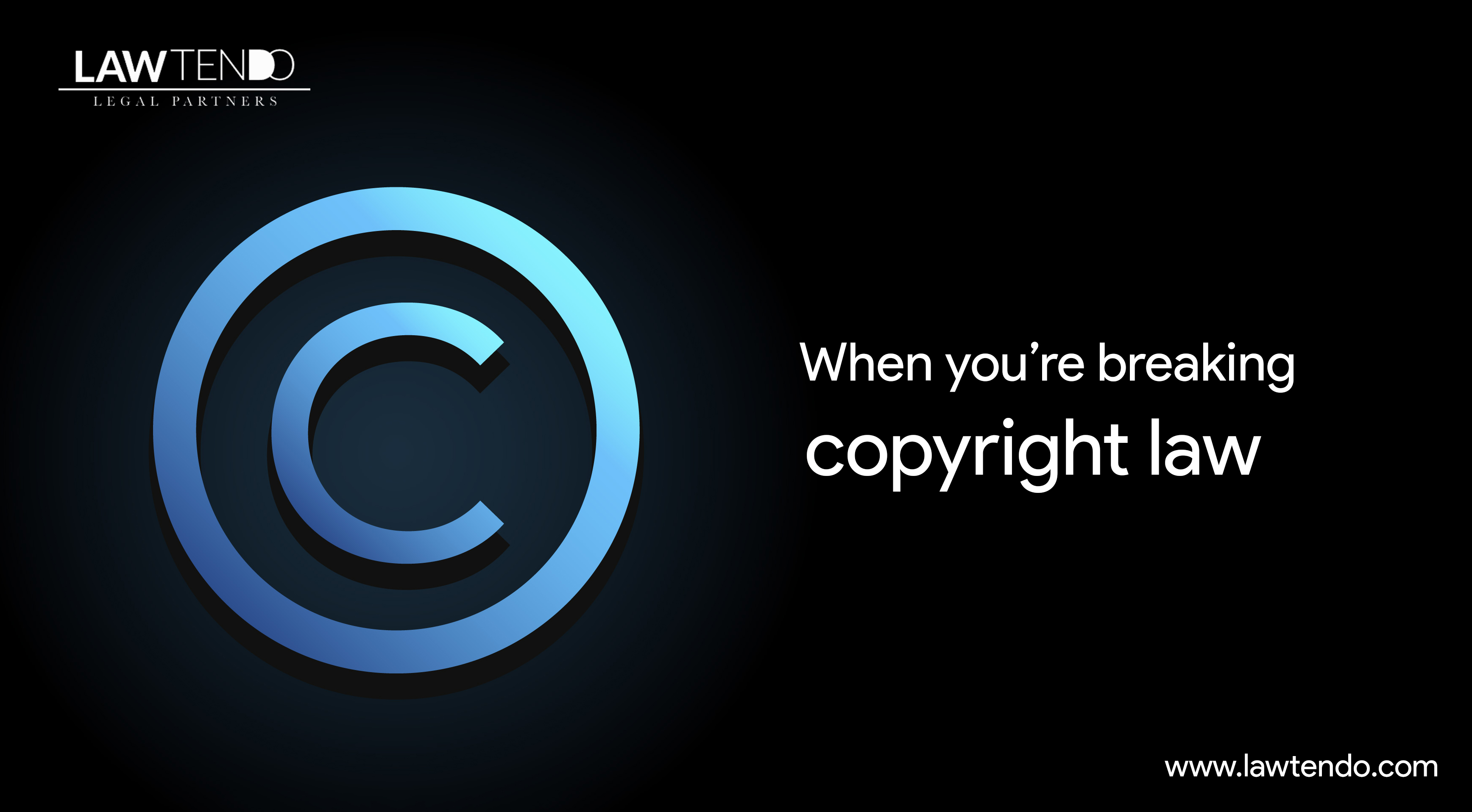When you’re breaking Copyright Law

Date : 09 Jan, 2019
Post By Barbie Duggal
The dictionary defines copyright as "a person's exclusive right to reproduce, publish, or sell his or her original work of authorship (as a literary, musical, dramatic, artistic, or architectural work)."
In rather simple words it means copyright is a law that gives you ownership over the things you create. Be it a painting, a photograph, a poem or a novel, if you created it, you own it and it’s the copyright law itself that assures that ownership.
The Copyright Act 1957 (as amended by the Copyright Amendment Act 2012) governs the subject of copyright law in India. Under the Copyright Act, 1957 the term "work" includes an artistic work comprising of a painting, a sculpture, a drawing (including a diagram, a map, a chart or plan), an engraving, a photograph, a work of architecture, dramatic work, literary work (including computer programmes, tables, compilations and computer databases), musical work (including music as well as graphical notations), sound recording and cinematographic film.
It's important to understand that copyright law covers the "form of material expression," not the actual concepts, ideas, techniques, or facts in a particular work. This is the reason behind why work must be fixed in a tangible form in order to receive copyright protection. A few examples of works being fixed in a tangible form include stories written on paper and original paintings on canvas. There must always be a physical rather tangible proof of your work to protect the same under the copyright law.
The ownership that copyright law grants come with several rights that the owner himself owns. Those rights include:
- The right to reproduce own work
- The right to prepare derivative work i.e. works that are related to the original work.
- The right to distribute copies of the same
- The right to perform the work
- The right to display the work publicly
All the above-mentioned rights are exclusive, which means that if the owner himself decides he can give up his rights which is called a Creative Commons Licence(a different concept). But unless this, no one can violate them legally. This means that, unless the owner allows no one can perform a piece written by him or make copies of it, even with attribution.
As per Section 17 of the Act, the author or creator of the work is the first owner of the copyright. An exception to this rule is that the employer becomes the owner of the copyright in circumstances where the employee creates a work in the course of and scope of employment. For example - if an employee writes a blog as part of his/her job, then if the rules of the company have no mention of it, has full copyright over his/her piece.
In order to be eligible for all the rights the registration of copyright is not mandatory in India and is protectable through the International Copyright Order, 1999 but it is advisable to register the copyright as the copyright registration certificate is necessary and acts as a “proof of ownership” in courts, Lawtendo can help you with the same.
The Copyright Act confers copyright protection in the following two forms:
(A) Economic rights of the author includes the rights mainly, in respect of literary, dramatic and musical, other than computer program, to reproduce the work in any material form including the storing of it in any medium by electronic means, to issue copies of the work, to perform the work in public, to make any cinematograph film or sound recording in respect of the work, and to make any translation or adaptation of the work. In the case of computer program, the author enjoys in addition to the aforesaid rights, the right to sell or give on hire. In the case of an artistic work, the rights available to an author include the right to reproduce the work in any material form, to communicate or issues copies of the work to the public, to include the work in any cinematograph work, and to make any adaptation of the work.
(B) Moral Rights of the author includes
(i) Right of paternity- the right of an author to claim authorship of work and a right to prevent all others from claiming authorship of his work.
(ii) Right of integrity- empowers the author to prevent distortion, mutilation or other alterations of his work, or any other action in relation to said work, which would be prejudicial to his honor or reputation.
In the case of original literary, dramatic, musical and artistic works, the duration of copyright is the lifetime of the author or artist, and 60 years counted from the year following the death of the author. But in the case of cinematograph films, sound recordings, anonymous publications, works of government and works of international organizations are protected for a period of 60 years which is counted from the year following the date of publication.
One of the supreme advantages of copyright protection is that protection is available in several countries across the world, although the work is first published in India. Also, the government of India has by virtue of the International Copyright Order, 1999, extended copyright protection to works first published outside India.





